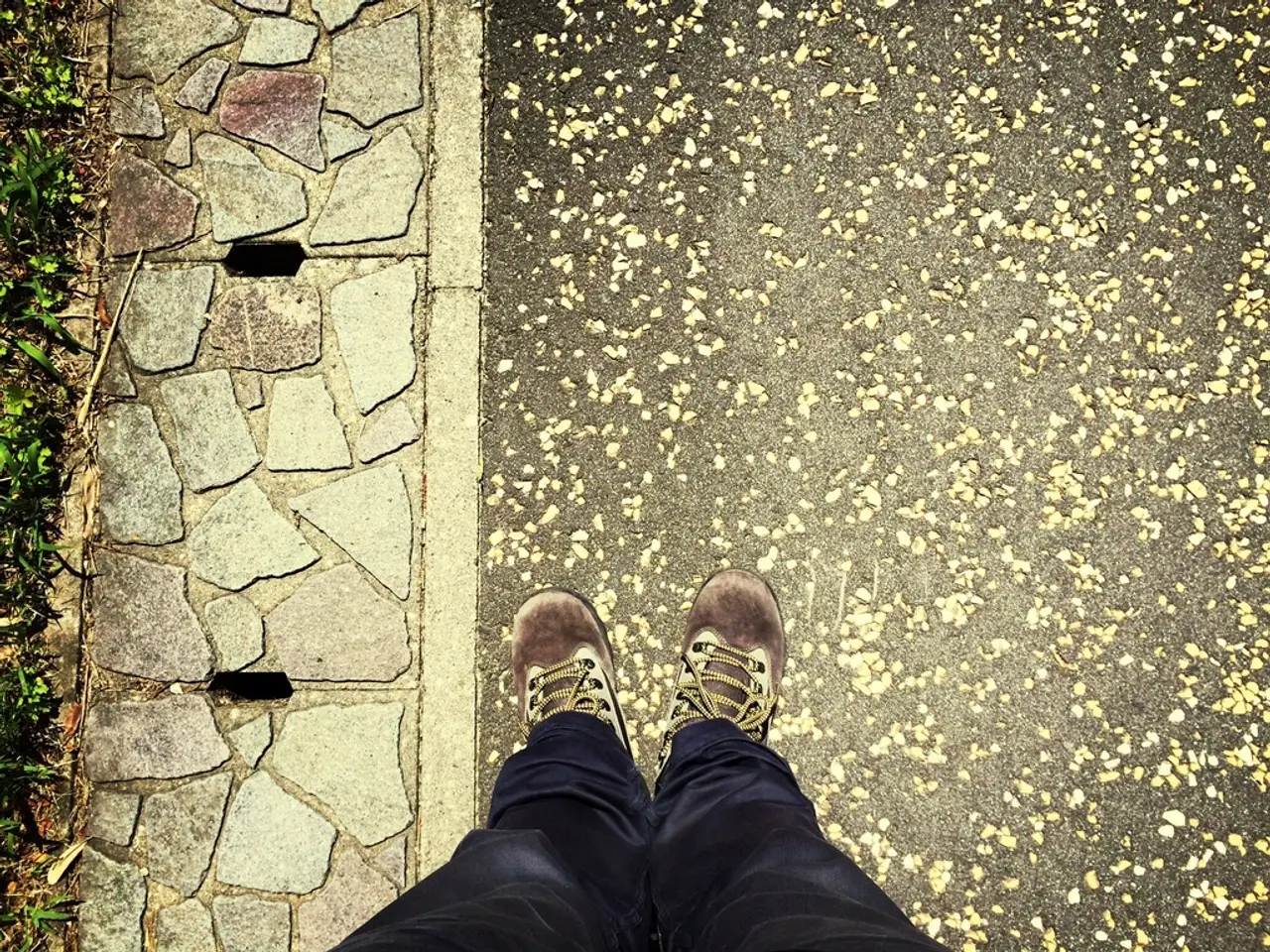Desperate plea from a family: Alessandro Luciano, their father, is now legless
Struggling Family Seeks Solution for Accessible Living
In the heart of Stuttgart, a family of seven is facing a daunting challenge. Alessandro Luciano, a man from Stuttgart-West, lost both of his legs due to an illness, leaving his family's home virtually inaccessible. His wife, Iljhama, a trained nurse, and the mother of their five children aged between 7 and 14, is left hauling Alessandro up the stairs of their fifth-floor apartment using a stair climber, a strain for her and taking away her husband's last bit of independence and dignity.
The illness, Meningococcus Type B (Neisseria), progressed rapidly, causing chills, fever, dark spots on the skin, and requiring hospitalization. Despite the initial slow response from the hospital doctors in Italy where the family was on holiday, Alessandro survived, but his nervous system was spared. Experts in Tübingen amputated both of his legs.
The family's predicament is further complicated by building regulations. Installing a stair lift isn't feasible due to restrictions on escape routes, and a wheelchair with tank tracks that could navigate the stairs is out of the question as the stairwell is too narrow. Moving out or relocating isn't an option due to finding a place for seven people in Stuttgart being nearly impossible.
The family's hope lies in an external lift, but it costs tens of thousands of euros, which is too much for them. They are currently collecting donations online to fund this essential modification. The community has also rallied around them, offering support and donations.
The family's situation highlights the challenges faced by families requiring accessible living due to disability. Legal frameworks and standards can help navigate these issues. In the United States, the Americans with Disabilities Act (ADA) requires that all new construction and alterations comply with the ADA Accessibility Guidelines (ADAAG). Existing facilities must remove architectural barriers if it is “readily achievable” to do so. Local jurisdictions might have additional or more stringent accessibility standards.
Solutions can include installing tactile indicators to aid vision-impaired residents, ensuring handrails meet code for height and grip, and negotiating alternative paths such as ramps or elevators where necessary. In high-rise apartments, buildings with elevators are required by many regulations to make units and common areas accessible.
A universal design approach ensures environments can be accessed and used by as many people as possible regardless of disability. This can include wider doors, automatic or power door operators, properly designed ramps, visual and tactile signage, and auditory or visual alarms.
Families facing similar challenges can review local building codes and disability access laws applicable to their jurisdiction, engage with housing providers, landlords, or condominium boards citing applicable laws and the necessity of reasonable accommodations, seek design professionals specializing in accessibility or universal design, and utilize tactile and assistive technology products compliant with local standards to retrofit spaces if structural changes are limited.
The Lucianos' story serves as a reminder of the importance of accessible living and the need for understanding legal requirements, applying Universal Design concepts, and using specialized tactile and structural adaptations to help families overcome challenges posed by narrow stairwells and high-rise living to secure accessible, safe, and functional homes.
[Link to the family's online donation campaign provided]
References:
- Accessibility for Ontarians with Disabilities Act Alliance
- New Jersey Division on Civil Rights
- U.S. Access Board
- Canadian Commission for UNESCO
- U.S. Department of Justice
- The Lucianos' struggle for accessible living underscores the significance of science and healthcare, as they navigate the challenges of Alessandro's disability caused by Meningococcus Type B.
- The family's predicament also points towards the importance of mental health, as Iljhama copes with the strain of hauling Alessandro up their inaccessible fifth-floor apartment.
- In search of solutions, the Lucianos turn to personal and family health, seeking financial resources through online donations for an external lift.
- The tale highlights the intersection of crime and justice with personal finance, as the family struggles to fund a modification that costs tens of thousands of euros.
- Efforts to create more accessible living spaces for people with disabilities can contribute to general news and societal progress, with laws such as the Americans with Disabilities Act pushing for universal design principles in architecture and facilities.




